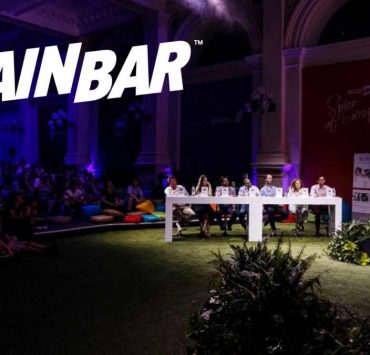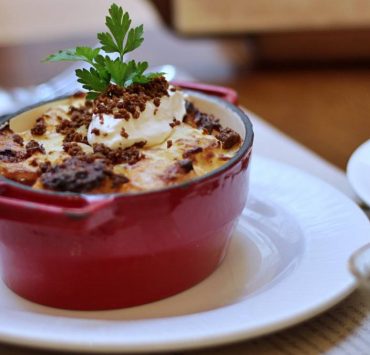We have had one with a porcelain top for almost 20 years, it works, and brews coffee with an aroma like no other. Its scent is one of happiness, it brings back the laid-back mornings of the 1990s, when we still had time for everything. We simply had time.
As the Szarvasi coffee-maker factory is closing down, this article evokes memories of the coffee-maker and the media representation of coffee consumption in the socialist era.
Drinking espresso became widespread in Hungary in the 1960s. The most popular type was the so-called double espresso, served black. It was consumed at home, in factories, in offices, in the morning, at noon and in the early afternoon. The morning coffee was like a ritual to start the day off, often paired with a cigarette.

The Szarvasi Cooperative for Iron and Metal Workers was founded with 17 members in 1952.
They tried their hand at manufacturing all sorts of products, such as tiled stoves, cooking stoves, corn grinders, soldering irons, but their most famous product of all time was the moka pot, produced since 1970 together with irons, lamps, pancake pans, meat grinders, contact grillers and hot plates. [1]
“If once we were an equestrian nation, today we can call ourselves a coffee-drinking nation. We drink black coffee in the morning, at noon, in the evening, in cafés, at work and at home too.”
– reported the weekly newspaper Szabad Föld about Hungarian coffee drinking habits in 1971. In 1975 the products of the Szarvasi Iron and Metal Cooperative reached far and wide in the world, from the UK to Egypt.
They employed 1600 workers. They took over the manufacturing of coffee-makers for 2 and 4 people from the Elzett Sheet Metal Factory, and produced them with Hollóháza porcelain tops under the brand name Scheherazade.
600 such coffee-makers were made each day, but it was still not enough to meet the growing demand. 200,000 coffee-makers were sold in 1970.[2] In 1974, Ludas Matyi, a satirical weekly paper wrote about the coffee-drinking habits of administrators, to draw their readers’ attention as to when not to disturb office workers:
“Half an hour before a coffee break, as the thirst for caffeine makes them edgy.
During the coffee break – no explanation needed there.
For half an hour after the coffee break, do not disturb their well-deserved peace.”[3]

The spread of coffee culture in villages was captured by this 1974 short story:
“Ten years ago, when you first brought this coffee-maker, I must tell you, I wasn’t too fond of it … And now, I can’t help waking up with it. How people can change… Then again, the doctor said it’s good for my blood pressure. In the morning, I fill up the moka pot for four people, I drink half of it right away, pour the other half in a thermos bottle and off I go to the fields…
At first, the women laughed at me, what posh habits I had, and that I’m just showing off, but then slowly they acquired a taste for coffee too… Now, we can hardly wait for the clock to strike 10, one of the women always pops the question: Auntie Rózsika, do you want a coffee? I am not sure if I told you already, but for a year now I am the foreman in the plant nursery.”[4]
And how did the workers have their coffee?
“We manual workers often protested against the office workers who had frequent espresso breaks, so much so that it was finally eliminated – not the coffee break, but the unfair discrimination, so now even the tool workshop has two coffee-making places. So far so good.
But a lot of people start the day by going to the warehouse to have a coffee, patiently waiting for their turn. Often 15-20 workers gather, but they can’t brew so much coffee all at once, and there are only eight cups anyway. At the workshop, they already know it is useless to go to the warehouse for spare parts at this time, because the warehouse lady is more interested in making coffee.”[5]
The journalist of Magyar Ifjúság magazine distinguished between several types of coffee: the coffee that his grandfather made every morning and ceremoniously took off the stove for a moment as soon as it started to brew – simply unforgettable.
This is in stark contrast to the lonely coffee consumed in the morning, even the smell of which was sour, only your hands and stomach desired it. And there are the ones gulped down during the day:
“that which the crane operator drinks before climbing back to his cage, that which the poet reaches out for before starting a new page, that which the waiter pours down his throat as soon as he crosses the kitchen threshold, that which the frozen police officer drinks at the café bar.”[6]

At the beginning of the 1980s Hungarian people spent much more on coffee than on personal hygiene and cosmetics. From the onset of the 1980s, the public awareness campaigns about preventing heart attacks tried to hinder the momentum that coffee drinking had gained.
“Bring me a cup of heart attack risk with sugar and cream” – said the Népszabadság, the national daily paper in 1981.[7]
Coffee cups did not receive captions about how harmful coffee is for your health, like cigarette packets did. At the time, drinking coffee was still not considered a true obsession or addiction, with the argument that if coffee drinkers travelled abroad and could not have their favoured drink for one or two weeks, they would not experience brutal withdrawal symptoms. However, coffee combined with cigarettes was considered a strong addiction even in those days.
“Time for the afternoon coffee. The ground-floor corridor of the workers’ hostel designated as the hall was thick with smoke.” – a common situation described in an article in 1986.[8]
Coffee combined with a cigarette as a ritual to start the day off became widespread at the beginning of the 1980s. At the time, every person consumed two and a half kilograms of coffee a year. Excessive coffee drinking was able to cause insomnia, tension, ulcers as well as migraines.[9] And although the culture of drinking coffee has been re-evaluated with good-quality coffee being pushed to the forefront, the coffee made in a Szarvasi coffee-maker made a lasting impression.
References:
[1] Magyarország, 1985. szeptember 29. 24. o.
[2] Magyarország, 1975. január 5. 20. o.
[3] Ludas Matyi, 1974. július 11. 6. o.
[4] Újhelyi János. Szárnyasoltár. Új Írás, 1974. december 54. o.
[5] Kéri Tamás: Rend az üzemben. Társadalmi Szemle, 1976. 10. 87. o.
[6] Magyar Ifjúság, 1980. szeptember 26. 4. o.
[7] Népszabadság, 1981. április 25. 6. o.
[8] Ország-Világ 1986. október 29. 22. o.
[9] Népszabadság, 1981. április 25. 6. o.




